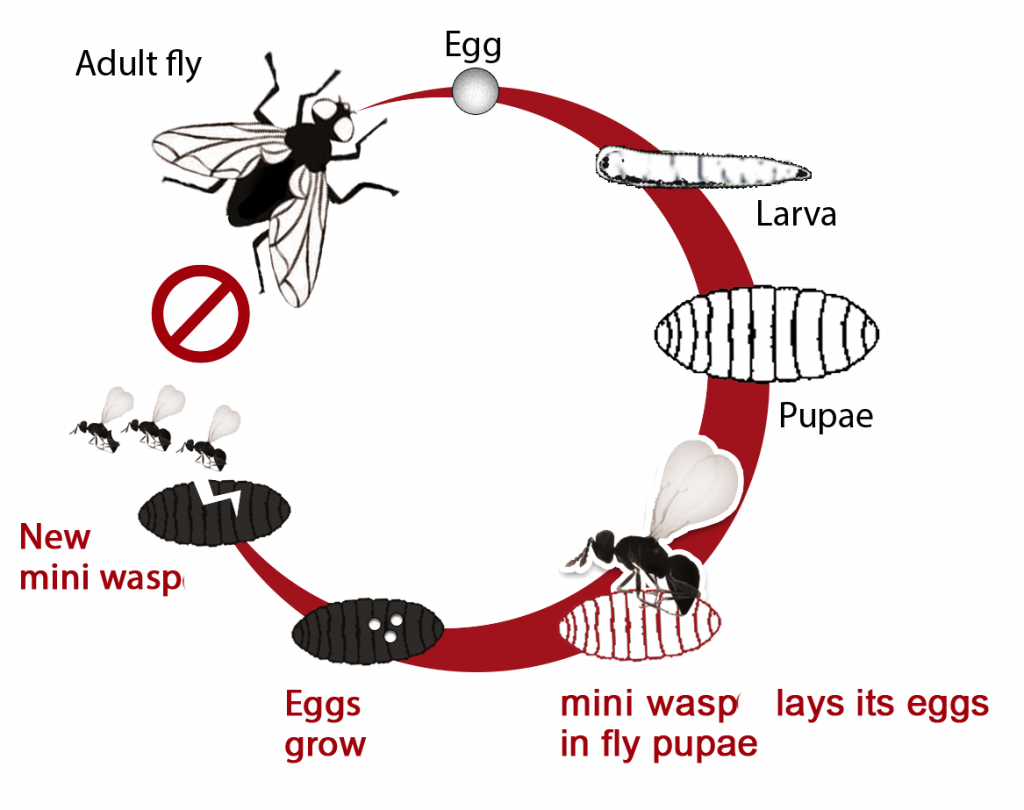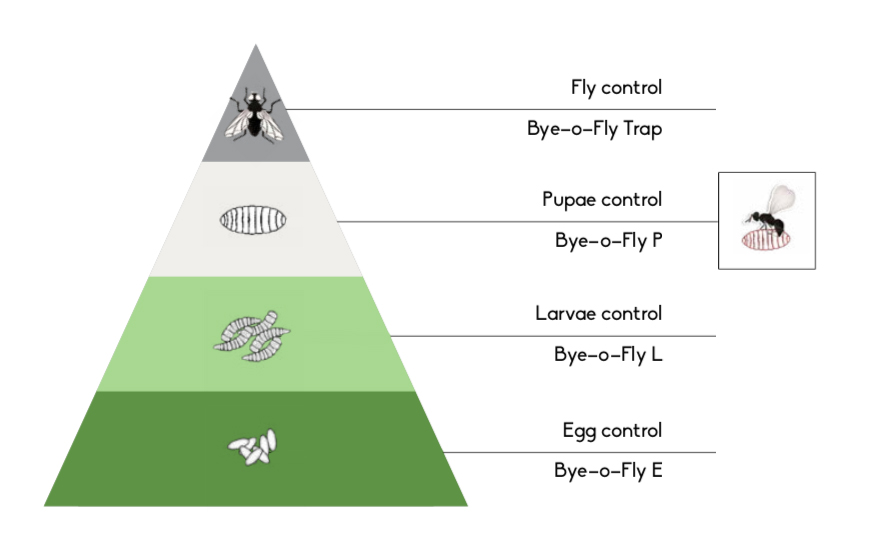What is it?
Bye-o-Fly P consists of a mixture of two indigenous parasitoids of stable and house flies (Spalangia Cameroni and Muscidifurax Raptor) These species are two of around nine thousand species of wasp naturally occurring in the UK and the most commonly used in biological fly control worldwide today.
Being only 1 to 1.5 mm long, these are often called mini-wasps but are inconspicuous and harmless to humans and animals. We sell the Bye-o-Fly parasitic mini wasps as pupae in cardboard tubes.
How does it work?
Once dispersed around areas where flies are breeding, the mini wasps will hatch from the pupae within a few days.
The Bye-o-Fly mini-wasps reproduce themselves by laying their eggs inside pupae of nuisance flies, which is why they are usually called parasitic wasps.
This mode of reproduction stops the development of the fly because the young mini wasp feeds on the contents of the fly pupa.
As a result, instead of a fly, a new mini wasp will hatch from the pupa. A female mini wasp kills approximately 100 fly pupae during her lifetime.

Where to apply?
Disperse the product on bedding in 5 to 6 small heaps in places not trampled by animals and suitable for the reproduction of flies (dry places along the walls, under the feeders, under the dividers).
The Bye-o-Fly mini wasps are effective against flies in a wide variety of environments where house flies (Musca Domestica) and stable flies (Stomoxys calcitrans) thrive.
When to apply?
The parasitic wasps actively seek for fly pupae in a radius of approximately 10 metres from where released. When the wasp finds a pupa, it pricks it and feeds on it. As a result, the fly pupa dies. The wasp then lays one or more eggs in the pupa and the wasp larvae feed on the dead pupa. Once the parasite has grown to adulthood, it leaves the pupa and seeks new fly pupa. The life cycle of the parasitic wasp is approximately 3 weeks.

